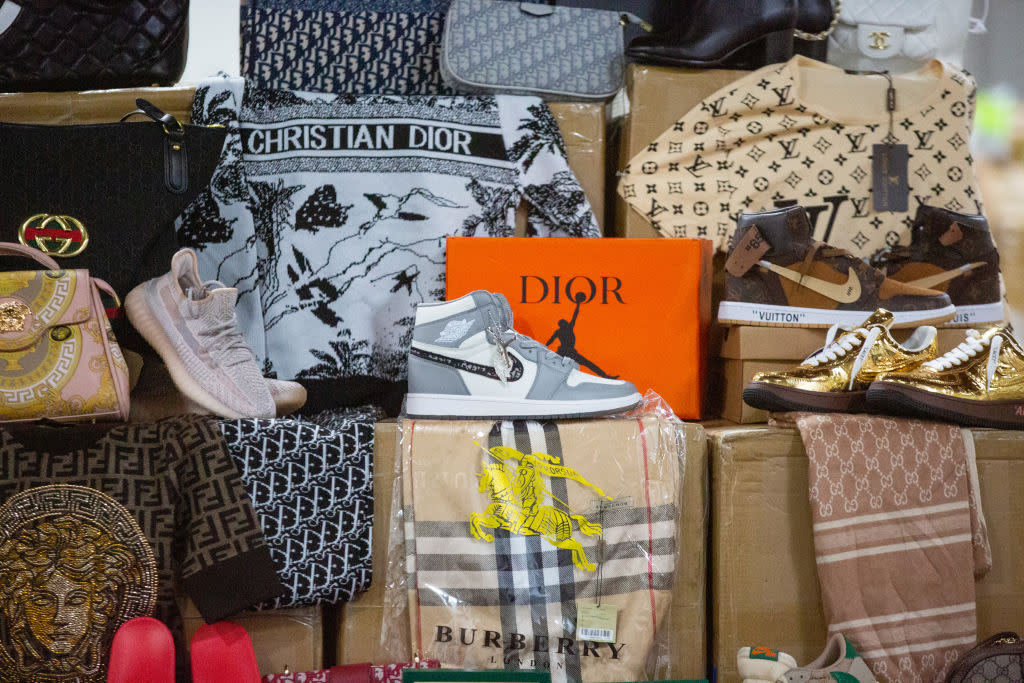US Trade Organizations Spotlight Counterfeit Protection on World Intellectual Property Day

Just in time for World Intellectual Property Day, the American Apparel & Footwear Association (AAFA) is commending the Office of the United States Trade Representative (USTR) on the release of the annual Special 301 Review report.
According to the AAFA, the report identifies foreign countries that deny adequate and effective protection of intellectual property rights or deny fair and equitable market access to U.S. entities that rely upon intellectual property protection.
More from Footwear News
Three Major Themes From AAFA's Executive Summit, From Culture to ESG
AAFA Teams Up With International Apparel Federation to Tackle Supply Chain Issues
“As we celebrate World Intellectual Property Day, AAFA appreciates the constructive dialogue between USTR, AAFA and our members to ensure that we protect the creative and innovative contributions of our members and other entrepreneurs around the world while simultaneously supporting American jobs,” Steve Lamar, president and CEO of AAFA, said in a statement.
AAFA noted that this report further provides an opportunity to put a spotlight on foreign countries and the laws, policies and practices that fail to provide adequate and effective IP protection and enforcement for U.S. inventors, creators, brands, manufacturers and service providers, which, in turn, harm American workers whose livelihoods are tied to America’s innovation and creativity-driven sectors.
The report identifies a wide range of concerns, including challenges with border and criminal enforcement against counterfeits, including in the online environment; high levels of online and broadcast piracy, including through illicit streaming devices; inadequacies in trade secret protection and enforcement in China, Russia and elsewhere; troubling “indigenous innovation” and forced or pressured technology transfer policies that may unfairly disadvantage U.S. right holders in markets abroad; and other ongoing, systemic issues regarding IP protection and enforcement, as well as market access, in many trading partners around the world.
To assemble the report, the Special 301 subcommittee received stakeholder input on more than 100 trading partners but focused its review on those submissions that identified whether a particular trading partner should be named as a Priority Foreign Country, placed on the Priority Watch List or Watch List, or not listed in the report.
Following extensive research and analysis, USTR has identified seven trading partners for its Priority Watch List, or countries that present long-standing and well-known challenges to intellectual property-intensive industries. They include Argentina, Chile, China, India, Indonesia, Russia and Venezuela.
What’s more, USTR has identified an additional 22 trading partners for its Priority Watch List, or countries that are taking steps to improve intellectual property protection and enforcement. These countries include Algeria, Barbados, Belarus, Bolivia, Brazil, Bulgaria, Canada, Colombia, Dominican Republic, Ecuador, Egypt, Guatemala, Mexico, Pakistan, Paraguay, Peru, Thailand, Trinidad and Tobago, Turkey, Turkmenistan, Uzbekistan and Vietnam.
Jennifer Hanks, director of brand protection at AAFA, added in a statement that its member’s products across the apparel and footwear industry continually remain at the top of the counterfeit items seized by U.S. Customs and Border Protection year after year.
“The sale of counterfeit clothes, shoes and travel goods not only hurts U.S. companies, but the millions of American workers they employ,” Hanks said. “We must work together to incentivize best practices for vetting sellers and goods, addressing repeat counterfeiter sellers and ensuring consumers have access to relevant information at the time of purchase – and holding those accountable when actions don’t match policies.”
This report comes as the AAFA and other trade organizations continue to call on Congress to pass the SHOP Safe Act, which will hold those responsible for promoting and selling counterfeit products accountable.
Best of Footwear News
Sign up for FN's Newsletter. For the latest news, follow us on Facebook, Twitter, and Instagram.

